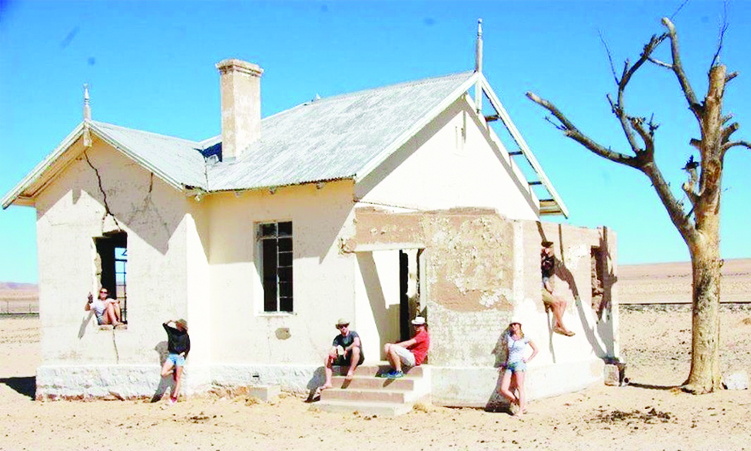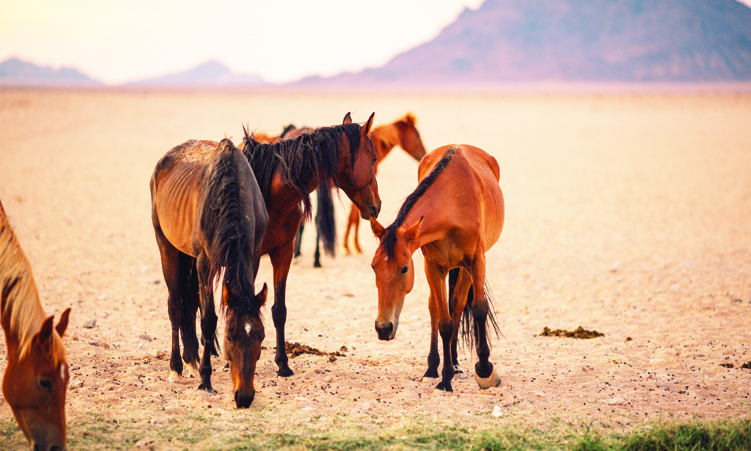On the road between Aus and Lüderitz in southern Namibia, the old Garub railway station stands as a silent testament to the region’s vibrant past. Each visit to this skeletal structure, framed by sparse trees against a vast, deep blue sky, evokes memories of its historical significance.
Though now a familiar stop for tourists, Garub’s story began with the construction of the Lüderitz railway in 1906 and the discovery of underground water in 1908. These events marked its emergence as a vital hub in the arid desert, eventually becoming known for Namibia’s population of wild horses.
In the early 1900s, the route from the coast inland was a treacherous ox-wagon track through the Namib Desert, littered with the bones of animals that succumbed to the harsh, waterless journey. Lüderitzbucht, as it was then called, relied on water shipped from the Cape Colony or produced by a small, inadequate desalination plant.
During the German-Nama war from 1904 to 1907, Lüderitzbucht became a crucial supply post for the Schutztruppe, prompting the construction of a railway line to facilitate transportation. Completed in 1906, the railway reached Kilometre 105 – later named Garub – on 13 September, setting a construction record with 2,5 kilometres of track laid per day. Situated 767m above sea level, Garub served as a key stop for replenishing supplies before the steam engines tackled the steep ascent to Aus.
The discovery of high-quality water at Kilometre 105 in 1908 transformed Garub into an essential water source. A 2km narrow-gauge line was built to transport water from the borehole to the railway, ensuring a steady supply for both locals and steam locomotives.
The landscape of southwestern Namibia shifted dramatically in 1908 with the discovery of diamonds near Lüderitz. The ensuing diamond rush brought a surge of activity to Lüderitzbucht, with diamond towns sprouting in the desert and the town itself bustling with new developments.
Amid this prosperity, the Lubowski family began selling refreshments at the Garub station in 1911, turning it into a popular lunch stop for train travellers. They even bottled and advertised ‘fresh Garub water’.


World War I further imprinted Garub in history. In 1914, when the Union Defence Force (UDF) from South Africa landed in Lüderitzbucht, they found the Germans had evacuated, destroying the railway line in their retreat. The UDF repaired the line and on 16 December 1914, they clashed with a German rearguard at Garub.
By February 1915, the UDF had repaired the station and water tanks, transforming Garub into a military hub. A photograph from this period shows a team of 30 mules hauling drilling machinery across the desert, epitomising the logistical challenges faced.
Garub’s military significance peaked with general Botha’s visit to boost troop morale as they prepared for battle against German forces entrenched in the Aus hills.
Despite occasional aerial bombings, the anticipated large-scale confrontation never occurred, with the Germans eventually retreating north to Gibeon, where a decisive engagement took place.
Garub continued to serve as a crucial water stop until steam locomotives gave way to diesel in the 1960s. The borehole remained operational, providing water for railway maintenance teams and the wild horses that roamed the area. In the late 1980s, parts of the Sperrgebiet, including the wild horses’ habitat, became part of Namib Naukluft Park and the Tsau //Khaeb (Sperrgebiet) National Park was established in 2004.
Today, an old borehole near Garub serves emergency grazing needs and supplies water troughs, attracting both wild horses and curious visitors. The dilapidated station, surrounded by a few stark tree trunks, continues to captivate photographers and history enthusiasts alike.
Garub, along with Grasplatz railway siding, Kolmanskop and early 1900s Lüderitz buildings, remains a picturesque reminder of a bygone era.
This stretch of desert, steeped in stories of water, diamonds, and wild horses, invites travellers to rest, explore and uncover the rich tapestry of Namibia’s past.

Stay informed with The Namibian – your source for credible journalism. Get in-depth reporting and opinions for
only N$85 a month. Invest in journalism, invest in democracy –
Subscribe Now!






